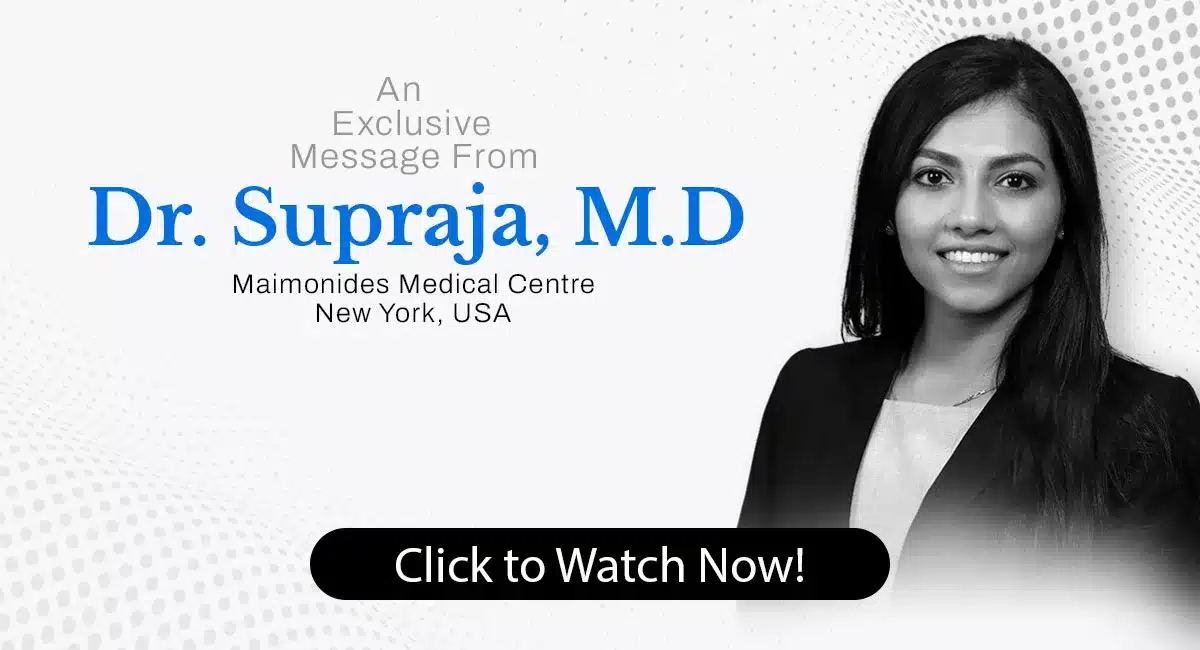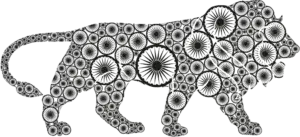The pursuit of a medical degree is a critical decision that sets the stage for a future career in healthcare. In this article, we delve into the nuances of pursuing an MBBS in India versus an MD in the USA, exploring the educational pathways, financial considerations, clinical training, and the various challenges and resources available to prospective medical students. We aim to provide a comprehensive comparison to help students make an informed choice that aligns with their career goals and personal circumstances.
Key Takeaways
- An MBBS in India is equivalent to an MD in the USA, but the educational systems, duration, and structure of the programs differ significantly.
- The MD degree is globally recognized and can lead to higher starting salaries, especially in the USA, compared to the MBBS in India.
- Clinical training and residency are critical components of medical education, with the USMLE being a pivotal exam for MBBS graduates seeking to practice in the USA.
- Financial aspects, including tuition fees, living expenses, and scholarship opportunities, play a crucial role in the decision-making process for medical students.
- Prospective students must navigate various challenges such as visa policies, cultural adjustments, and intense competition, but support and resources are available to aid in the transition.
Understanding the Educational Pathways

Comparative Overview of MBBS in India and MD in the USA
The decision to pursue a medical degree is a significant one, with the choice between an MBBS in India and an MD in the USA being particularly pivotal. In India, the MBBS is the foundational medical degree, requiring students to clear the NEET entrance exam and complete a 5.5-year program, including a mandatory internship. In contrast, the MD in the USA is a postgraduate degree that follows a pre-medical undergraduate education, typically extending over a 4-year period after the initial 4 years of undergraduate study.
The pathways to becoming a doctor in both countries are distinct not only in structure but also in the opportunities they present. Admission in MBBS in India is highly competitive, often with a high management quota fee, whereas the MD in the USA, though expensive, offers a broader global recognition and potentially higher starting salaries. For MBBS graduates looking to practice in the USA, passing the USMLE is a crucial step, and Divine Education Abroad Consultancy can provide guidance for this transition.
The choice between MBBS and MD ultimately hinges on one’s career goals, resources, and the value placed on global recognition and flexibility in medical practice.
Here is a brief comparison of key aspects:
| Aspect | MBBS in India | MD in the USA |
|---|---|---|
| Duration | 5.5 years (including internship) | 4 years (post-bachelor’s) |
| Entrance Exam | NEET | None (post-bachelor’s) |
| Recognition | Limited | Worldwide |
| Minimum Salary | 5-10 lakhs/year | 1.8-2.5 crores/year |
| Admission Quota Fee | High | None |
While both degrees lead to a medical practice, the MD in the USA is often associated with a research-focused approach and a specialization in a particular field of medicine. The MBBS in India, on the other hand, is a broad-based degree that covers all areas of medicine, preparing graduates for a wide range of medical careers.
Admission Requirements and Entrance Exams
The journey to becoming a doctor in India or the USA begins with understanding the distinct admission requirements and entrance exams for each country. In India, the National Eligibility cum Entrance Test (NEET) is the gateway for aspirants aiming to secure a seat in an MBBS program. NEET’s score is pivotal, determining not only eligibility but also the quality of the institution one can attend. On the other hand, the USA requires candidates to clear the Medical College Admission Test (MCAT) for entry into MD programs. The MCAT assesses problem-solving, critical thinking, and knowledge of natural, behavioral, and social science concepts and principles prerequisite to the study of medicine.
Admission to medical schools in both countries is highly competitive, with additional criteria such as academic performance, interviews, and relevant experience also playing a crucial role. For international students eyeing the MD in the USA, additional tests like the GRE or TOEFL/IELTS for English proficiency may be required. It’s essential to verify the global recognition of the degree from the chosen institution, ensuring it aligns with one’s career goals and the requirements of the country where they plan to practice.
The financial aspect is also a significant consideration, as scholarships and financial aid can make pursuing a medical degree more accessible, especially in the USA, where diverse patient populations and cultural competence are integral parts of the educational experience.
Duration and Structure of Medical Programs
The journey to becoming a doctor in India or the USA follows distinct paths, each with its own set of timelines and structures. In India, the MBBS degree is an undergraduate program that typically spans five to six years, including a mandatory internship. This comprehensive course covers a broad spectrum of medical sciences and equips students with essential clinical skills.
In contrast, the MD in the USA is a postgraduate degree pursued after completing an undergraduate pre-medical course. The MD program itself usually takes four years to complete, with the entire process from undergraduate to MD degree taking approximately eight years. However, some pathways, such as the Fast Track MD program, can shorten this duration by integrating pre-medical and medical studies.
Both degrees culminate in a period of practical training, but the structure of this training differs. MBBS students in India undertake a rotating internship, while MD students in the USA engage in residency programs that can last from three to seven years, depending on the specialty.
The choice between these educational pathways will significantly impact the duration and nature of one’s medical training, as well as the timeline to becoming a fully licensed practitioner.
Recognition and Global Acceptance of Degrees
The pursuit of a medical degree, whether it be an MBBS in India or an MD in the USA, culminates in a globally recognized qualification, opening doors to international career opportunities. Medical graduates from India are eligible to pursue post-graduation studies and practice in countries such as the US, Canada, Australia, and New Zealand, provided they meet the necessary licensing requirements. The MD degree from the USA is similarly esteemed, with its holders enjoying worldwide recognition and the ability to practice across various healthcare systems after clearing relevant exams like the USMLE.
However, it is crucial to verify the global acceptance of the degree from the specific institution one is considering. For instance, to practice in India after obtaining an MD from the USA, graduates must pass the Foreign Medical Graduate Examination (FMGE). The table below succinctly compares the recognition and acceptance of the MBBS and MD degrees:
| Degree | Country of Issue | Global Recognition | Licensing Exams Required |
|---|---|---|---|
| MBBS | India | Selective | Varies by destination |
| MD | USA | Broad | USMLE, FMGE, etc. |
Recognition of the degree is not the only factor; graduates must also consider the licensing requirements and the competitive nature of securing a residency or practice position abroad. It is essential to research and understand the specific details of each program and its global acceptance before making any decisions.
Financial Aspects and Career Prospects

Tuition Fees and Living Expenses
The pursuit of a medical degree, whether it be an MBBS in India or an MD in the USA, involves significant financial considerations. Tuition fees and living expenses are substantial factors that can influence a student’s decision and potential debt burden upon graduation. In India, the cost of an MBBS program can vary widely depending on the institution. For instance, the total tuition fee for the MBBS program at Mahatma Gandhi University of Medical Sciences and Technology (MGUMST) is approximately INR 67.50 Lakh, with additional costs such as a one-time admission fee and hostel charges. On the other hand, the tuition fees for medical education in the USA are notoriously high, with an average cost that can be daunting for international students.
When considering the financial aspects of medical education, it is essential to account for both tuition fees and the cost of living, which together constitute the bulk of expenses during one’s studies.
To provide a clearer picture, here’s a comparison of the costs associated with medical education in India and the USA:
| Country | Tuition Fees (approx.) | Additional Costs |
|---|---|---|
| India | INR 67.50 Lakh (MGUMST) | Admission fee, Hostel fee |
| USA | $800,000 (average for international students) | Living expenses |
It’s important to note that these figures are subject to change and may vary based on the specific medical school and location. Additionally, students should explore scholarship opportunities and financial aid options to mitigate the financial burden of their medical education.
Scholarship Opportunities and Financial Aid
Navigating the financial landscape of medical education can be daunting, but scholarship opportunities and financial aid play a pivotal role in making the dream more accessible. In both India and the USA, a variety of scholarships are available to alleviate the burden of tuition fees and living expenses. For instance, in the USA, scholarships can range from partial to full tuition coverage, often based on merit or financial need.
Financial Aid Options:
- Merit-based Scholarships
- Need-based Grants
- Fellowships for Research
- Work-Study Programs
- Loan Forgiveness for Service in Underserved Areas
While the cost of medical education is high, the availability of financial aid and scholarships can significantly reduce the financial strain on students and their families.
It is crucial for prospective medical students to actively seek out these opportunities. Many students overlook financial aid, either due to a lack of awareness or the assumption that they may not qualify. Researching and applying for scholarships requires diligence and can be a competitive process, but the rewards are substantial, potentially covering a significant portion of educational expenses.
Starting Salaries and Return on Investment
When considering the return on investment for pursuing an MBBS in India versus an MD in the USA, starting salaries play a crucial role. Graduates from medical schools in the USA, holding an MD degree, can expect significantly higher starting salaries compared to their counterparts with an MBBS from India. This difference is reflective of the distinct economic conditions and healthcare systems in the two countries.
In India, the average starting salary for an MBBS graduate ranges from Rs. 5.4 LPA for a Doctor to Rs. 10.8 LPA for a Surgeon. In contrast, MD graduates in the USA can start with salaries that are several times higher, with an average MD salary going up to INR 8.6 LPA, which is equivalent to a much higher amount in USD.
The disparity in starting salaries is just one aspect of the financial considerations when choosing between an MBBS in India and an MD in the USA. It is important to weigh the initial costs of education against the long-term earning potential.
Here is a brief comparison of average starting salaries for different medical profiles in India:
| Job Profile | Average Starting Salary (INR) |
|---|---|
| Doctor | 5.4 LPA |
| Medical Officer | 5.2 LPA |
| Surgeon | 10.8 LPA |
| General Physician | 7.2 LPA |
| Paediatrician | 8 LPA |
While the initial investment in medical education in the USA is higher, the return on investment can be substantial, given the higher starting salaries and career growth prospects. It is essential for prospective medical students to consider these financial aspects when planning their education and career paths.
Career Pathways after MBBS and MD
Upon completing an MBBS in India or an MD in the USA, graduates face a multitude of career pathways, each with its unique prospects and challenges. The choice between MBBS and MD should align with one’s long-term career aspirations; MBBS offers a broad-based medical education, while an MD provides specialized knowledge in a particular medical field.
For MBBS graduates, career options are not limited to clinical roles; there are seven important non-medical career options to consider, such as Legal Medical Advisor, Hospital Administrator, and Medical Researcher. Similarly, MD graduates can pursue specialized roles or engage in research and teaching at academic institutions.
The journey from graduation to establishing a successful career in medicine requires careful consideration of one’s qualifications, the scope of practice, and the regulatory environment of the country where one wishes to practice.
In the USA, MBBS graduates from India can follow two main pathways to practice medicine: the USMLE Route or the Fast Track MD Program. Each pathway demands a significant investment of time and effort but promises a rewarding career in medicine.
- USMLE Route: Clear USMLE Steps 1 and 2, and match into a residency program.
- Fast Track MD Program: A 4-year program designed for international students, enhancing residency match chances.
Ultimately, whether one pursues an MBBS or an MD, the journey is marked by a commitment to lifelong learning and adapting to the evolving demands of the healthcare industry.
Clinical Training and Residency

Clinical Rotations in India vs. the USA
Clinical rotations form a critical component of medical education, offering students hands-on experience in various specialties. In India, MBBS students typically begin their rotations in the second half of their program, while in the USA, MD students start clinical rotations after completing two years of pre-clinical studies.
The structure and exposure provided during these rotations can significantly influence a medical graduate’s skills and opportunities. In the USA, rotations are often conducted in teaching hospitals affiliated with the medical school, providing exposure to a diverse patient population and advanced medical practices. Indian medical students may have rotations in less diverse settings, which can impact their global career prospects.
Clinical rotations in the USA are integral to the residency application process, as they allow students to obtain Letters of Recommendation (LORs) and build a network within the healthcare system. This is less emphasized in India, where the focus is more on completing the curriculum requirements.
The choice between pursuing clinical rotations in India or the USA should be informed by one’s career goals, the value placed on global recognition, and the desire for diverse clinical exposure.
Residency Match Process in the USA
The residency match process in the USA is a critical step for medical graduates seeking to practice medicine in the country. The Match, as it is commonly known, is a highly competitive and complex process that pairs applicants with residency programs. Graduates with an MBBS from India must first pass the United States Medical Licensing Examination (USMLE) before they can participate in The Match.
- USMLE Step 1: Basic Medical Sciences
- USMLE Step 2 CK: Clinical Knowledge
- USMLE Step 2 CS: Clinical Skills
After successfully completing these exams, candidates enter the National Resident Matching Program (NRMP), where they rank their preferred residency programs. Similarly, residency programs rank the candidates. A computer algorithm then matches applicants to programs based on these preferences.
The ultimate goal is to secure a residency position that aligns with the candidate’s medical specialty interests and career aspirations.
For MBBS graduates, the journey to practicing medicine in the USA can be arduous, but with the right guidance, such as that provided by Divine Education Abroad Consultancy, the path can be navigated successfully.
Importance of USMLE for MBBS Graduates
For MBBS graduates aspiring to practice medicine in the United States, the United States Medical Licensing Examination (USMLE) is a critical step in their career pathway. Passing the USMLE is essential for obtaining a residency position, which is a prerequisite for medical licensure in the U.S. The examination assesses a physician’s ability to apply knowledge, concepts, and principles crucial for effective patient care.
USMLE Steps for MBBS Graduates:
- Step 1: Basic Medical Sciences
- Step 2 CK: Clinical Knowledge
- Step 2 CS: Clinical Skills
- Step 3: Patient Management
The USMLE not only evaluates medical knowledge but also ensures that MBBS graduates can demonstrate the clinical skills necessary for safe and effective patient care.
MBBS graduates must be aware that the USMLE is a high-stakes exam that requires extensive preparation. It is often recommended to gain clinical experience in the U.S. healthcare system to enhance understanding and performance on the exam. Success in the USMLE significantly improves the chances of matching into a residency program, which is highly competitive, especially for International Medical Graduates (IMGs).
Transitioning from MBBS to Medical Practice in the USA
For MBBS graduates from India, transitioning to medical practice in the USA involves a strategic decision-making process. The primary route is through the United States Medical Licensing Examination (USMLE), which is a multi-step process that assesses a doctor’s ability to apply knowledge, concepts, and principles crucial for effective patient care in the USA.
Option 1: USMLE Route
- Clear USMLE Steps 1 and 2.
- Apply for the residency match program in the USA.
- Complete residency to practice medicine in the USA.
Option 2: Fast Track MD Program
- Enroll in a 4-year Fast Track MD program designed for international students.
- Complete 2 years of theoretical sciences and 2 years of clinical rotations in the USA.
- Enhance residency match chances with US clinical experience.
Choosing between these options requires careful consideration of career goals, resources, and the willingness to invest additional time in education. The Fast Track MD Program, in particular, offers a structured pathway with significant advantages, such as providing US clinical experience and opportunities to earn strong Letters of Recommendation (LORs), which are crucial for the residency application process.
The acceptance rate into residency programs can be quite challenging due to intense competition, the need for US clinical rotations, and obtaining LORs from US hospitals. Therefore, it is essential for MBBS graduates to meticulously plan their approach and leverage all available resources to successfully transition into the US medical system.
Challenges and Considerations

Navigating Visa and Immigration Policies
The journey to becoming a medical professional in the USA for an international student involves a critical step: navigating the complex visa and immigration policies. For students pursuing an MD in the USA, obtaining a student visa is a prerequisite that requires meticulous planning and understanding of the immigration system.
Congratulations on your decision to study in the United States. Nonimmigrant students who come to the United States to study must follow specific rules.
Here is a simplified list of steps that students typically need to follow:
- Secure admission to a SEVP-certified institution.
- Receive a Form I-20 from the institution.
- Pay the SEVIS I-901 fee.
- Apply for a student visa (F-1 or J-1) at a U.S. Embassy or Consulate.
- Prepare for and attend the visa interview.
- Upon visa approval, make travel arrangements in compliance with the visa start date.
Each of these steps requires careful attention to detail and adherence to timelines to ensure a smooth transition into the U.S. educational system. It is also important to stay updated with any changes in immigration policies that could affect your study plans.
Cultural and Educational Adjustments
Adapting to a new educational system and culture is a significant challenge for students transitioning from an MBBS in India to pursuing medical education in the USA. The shift from a familiar environment to an entirely new context requires resilience and flexibility. Students must not only grasp different academic expectations but also navigate social nuances and, at times, language barriers.
Key differences in educational structure, such as the emphasis on practical skills and critical thinking in the USA, contrast with the more theoretical approach often experienced in Indian medical schools. This transition can be overwhelming, but it is also an opportunity for personal and professional growth.
Students should approach this period of adjustment with an open mind and a willingness to learn, both academically and culturally. Seeking support from peers and faculty can ease the transition, as can engaging with cultural organizations and events on campus.
Understanding the nuances of the healthcare system in the USA is also crucial for clinical success. Here, a list of considerations for cultural and educational adjustments:
- Embracing the diversity of the patient population and healthcare team.
- Adapting to the patient-centered care model prevalent in the USA.
- Learning to navigate the insurance-based healthcare system.
- Developing communication skills to interact effectively with patients and colleagues from diverse backgrounds.
Long-Term Commitment and Career Uncertainty
Choosing to pursue a medical degree, whether an MBBS in India or an MD in the USA, requires a significant long-term commitment. Students must be prepared for years of rigorous study, challenging exams, and demanding clinical rotations. The path to becoming a physician is not only long but also fraught with career uncertainty. Even after obtaining a degree, there is no guarantee of a residency placement or a stable job market.
- Career Path Uncertainty: Concerns about residency placements, licensure, and career opportunities post-graduation.
- Heavy Workload: Demanding work hours and heavy patient loads can lead to potential burnout.
- Broad Scope of Practice: The depth of knowledge required across various medical conditions can be overwhelming.
The journey to becoming a doctor is a marathon, not a sprint. It demands resilience and adaptability, as the medical landscape is ever-evolving.
Ultimately, the decision to embark on this journey should be weighed against personal goals, resources, and the willingness to navigate the complexities of the medical profession. It is essential to consider the impact of these factors on one’s personal life and well-being.
Competition and Acceptance Rates
The journey to becoming a doctor in either India or the USA is marked by intense competition at every stage. In the USA, gaining admission to top-tier medical schools can be highly competitive, with acceptance rates for international students being less than 1%. The scenario in India is no different, with the NEET examination serving as a formidable gateway for aspiring MBBS students.
When comparing the two, it’s essential to consider the structured pathways and the acceptance rates that reflect the level of competition:
- India: Entrance through NEET, high management quota fees, and limited seats.
- USA: Entrance exams like MCAT, high tuition fees, and a complex admission process.
The decision to pursue an MBBS in India or an MD in the USA should be informed by a clear understanding of these competitive landscapes and the acceptance rates that underscore the challenges faced by medical aspirants.
Ultimately, the choice hinges on one’s career goals, resources, and readiness to navigate the competitive waters of medical education.
Support and Resources

Guidance and Mentorship Programs
The journey to becoming a healthcare professional is arduous and often convoluted, especially when navigating international medical education pathways. Guidance and mentorship programs play a pivotal role in demystifying this process, offering structured support to students. For instance, initiatives like the collaboration between CLIRNET and AAPI provide a Mentorship & Observership Model that channels expertise from medical professionals in the USA to guide young healthcare professionals in India.
Mentorship programs not only offer academic and career guidance but also instill confidence in students, preparing them for the challenges ahead.
Understanding the nuances of such programs can be the difference between a successful medical career and a path fraught with avoidable obstacles. Here are some key components of effective mentorship programs:
- Personalized career planning and advice
- Networking opportunities with experienced professionals
- Assistance with clinical rotations and residency applications
- Support for licensing examinations like USMLE
These programs often serve as a bridge, connecting the theoretical knowledge acquired during medical school with the practical demands of the medical profession.
Building a Support Network
Establishing a support network is crucial for medical students studying abroad. The journey through medical education, especially in a foreign country, can be challenging and often overwhelming. Building a strong network of peers, mentors, and professionals is essential for success.
- Peers: Connect with fellow students who can relate to your experiences and challenges. Form study groups to tackle difficult subjects together.
- Mentors: Seek guidance from experienced professionals who can provide insights into the medical field and advice on navigating the educational system.
- Professionals: Engage with healthcare professionals during clinical rotations to gain practical knowledge and build relationships that could lead to future opportunities.
A robust support network not only provides emotional and academic support but also opens doors to career opportunities and professional growth. It’s a foundation upon which a successful medical career can be built.
Leveraging Consultancy Services
Navigating the complex landscape of international medical education can be overwhelming for aspiring doctors. Consultancy services play a pivotal role in simplifying this journey, offering tailored guidance that aligns with individual aspirations and academic profiles. These services provide a structured approach to the application process, ensuring that students are well-prepared for every step of their medical education abroad.
Consultancies like Divine EAC specialize in guiding students through various pathways, including the Fast Track MD Program in the USA, which bypasses traditional entrance exams and offers a more direct route to a medical career. They offer comprehensive support, from understanding the nuances of visa applications to securing clinical rotations and residency placements.
- Program Selection: Assisting in choosing the right medical program that fits the student’s career goals.
- Application Assistance: Providing help with the entire application process, including personal statements and interviews.
- Financial Planning: Advising on tuition fees, scholarships, and financial aid to manage the cost of education.
- Visa Guidance: Navigating the complexities of visa and immigration policies.
- Pre-departure Orientation: Preparing students for the cultural and educational adjustments they will face abroad.
By leveraging consultancy services, students gain access to a wealth of knowledge and resources that can demystify the process of studying medicine in the USA, ultimately leading to a successful and rewarding career in the medical field.
Preparing for International Medical Education
Embarking on an international medical education journey requires meticulous planning and access to the right resources. Prospective students must navigate a complex landscape of prerequisites, including academic qualifications and language proficiency tests like the GRE or TOEFL/IELTS. It’s essential to research the recognition of the medical degree in both the country of study and the home country to ensure a smooth career transition post-graduation.
For Indian students aiming to pursue an MD in the USA, popular resources such as Kaplan, UWorld, First Aid for the USMLE Step 1, Pathoma, and others can be invaluable. These resources provide comprehensive review materials and practice questions that are crucial for excelling in exams like the USMLE. Here’s a list of steps to consider:
- Research the accreditation and recognition of the medical program and university.
- Understand the academic prerequisites and standardized test requirements.
- Possess a recognized medical degree (MBBS or equivalent) from a recognized institution.
- Prepare for necessary entrance exams and utilize online forums and question banks.
While the process can be daunting, the right preparation and resources can pave the way for a successful medical career abroad. Remember, the journey of a thousand miles begins with a single step, and with the right guidance, you can navigate this path with confidence.
Embarking on a medical career is a significant decision, and Divine Education Abroad Consultancy is here to ensure your journey is smooth and successful. With our Fast-Track MD Pathway, you can bypass the MCAT and other competitive exams, and gain access to a 5-year medical program with a 97x higher success rate. Our 100% Admission Guarantee and satisfaction ensure that your dream of becoming a US-qualified doctor is within reach. Don’t let financial constraints hold you back; we offer up to $90,000 in scholarship assistance. Take the first step towards a rewarding medical career in the US/UK by visiting our website and discovering how we can guide you every step of the way.
Conclusion
In summary, the journey to becoming a doctor through an MBBS in India or an MD in the USA presents distinct pathways, each with its unique set of challenges and rewards. Pursuing an MBBS in India offers a broad-based medical education with a focus on affordability and local healthcare needs, while an MD in the USA provides a specialized, globally recognized qualification with a higher financial investment and international exposure. Aspiring medical professionals must weigh factors such as duration, cost, entrance exams, and career objectives when choosing their path. Additionally, the option of a Fast Track MD program in the USA for international students, including those with an MBBS from India, offers an accelerated route to a medical career with strong USMLE preparation and clinical rotation support. Ultimately, the decision should align with the individual’s career aspirations, resources, and readiness to navigate the complexities of medical education and practice in a global context.
Frequently Asked Questions
Is the MD degree from the USA recognized in India?
Yes, the MD degree is recognized globally, including in India. However, to practice in India, MD graduates must pass the Foreign Medical Graduate Examination (FMGE).
Can I practice medicine in the USA after completing an MBBS degree in India?
Yes, after completing an MBBS, you can pursue the USMLE Steps 1 and 2 and apply for the residency match program in the USA. Alternatively, you can opt for a Fast Track MD program designed for international students.
What are the main differences between MBBS in India and MD in the USA?
MBBS in India is a 5.5-year program with an entrance exam (NEET), while the MD in the USA is a 5-year program with no entrance exam and offers worldwide recognition and higher starting salaries.
Can Divine EAC help me with postgraduate medical programs in the US after an MBBS?
Divine EAC primarily facilitates undergraduate MD programs and does not offer services for postgraduate medical programs for students who have completed their MBBS.
What are the financial considerations for studying medicine in the USA?
Studying medicine in the USA involves high tuition fees and living costs, which can be around $800,000. However, scholarships and financial aid are available, and the return on investment can be significant.
Can I transfer to an MD program in the USA if I’m already in a bachelor’s program?
Direct transition from a bachelor’s program to an MD program is not standard, but there are alternative pathways that might accommodate credit evaluations for early transition.














